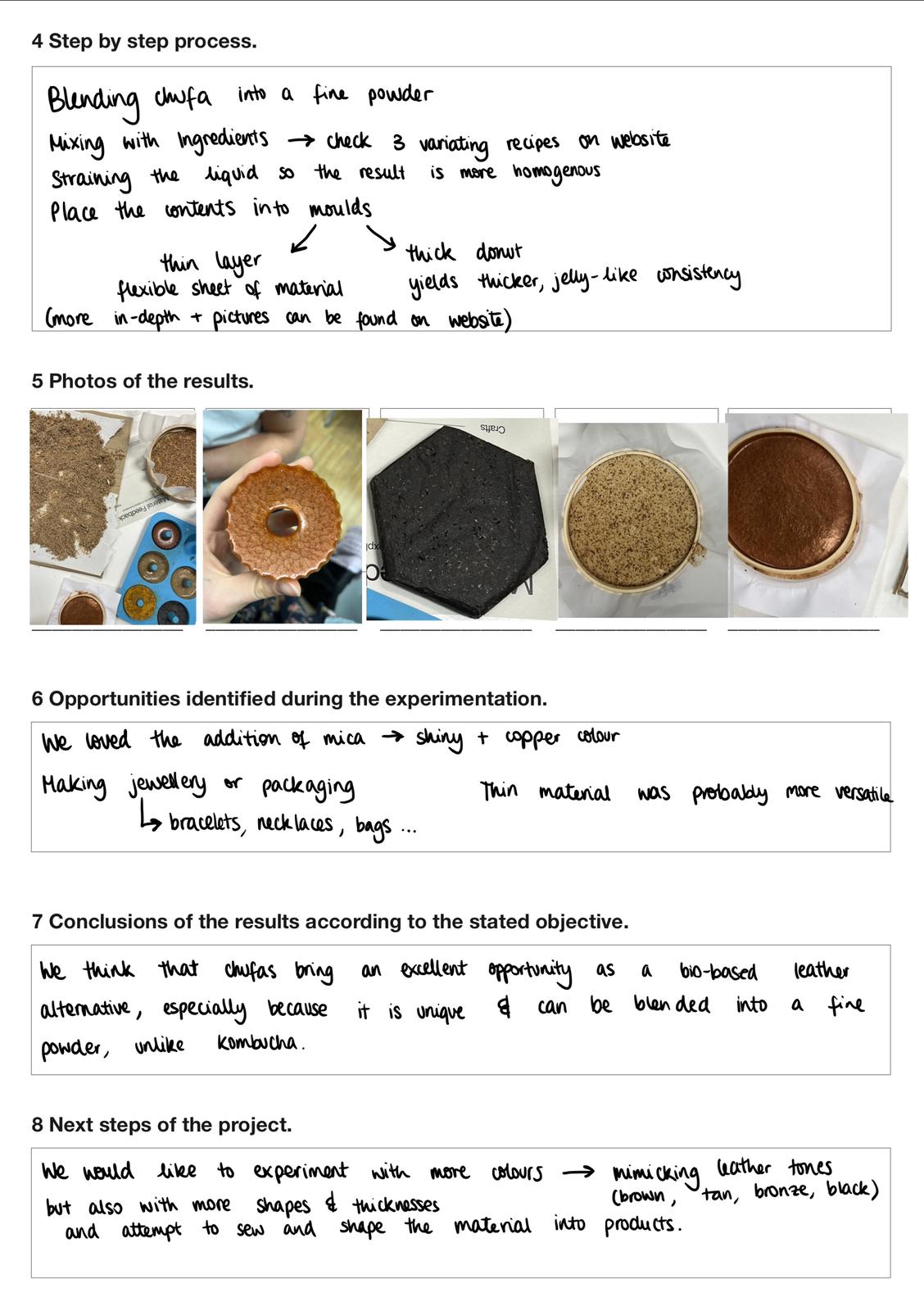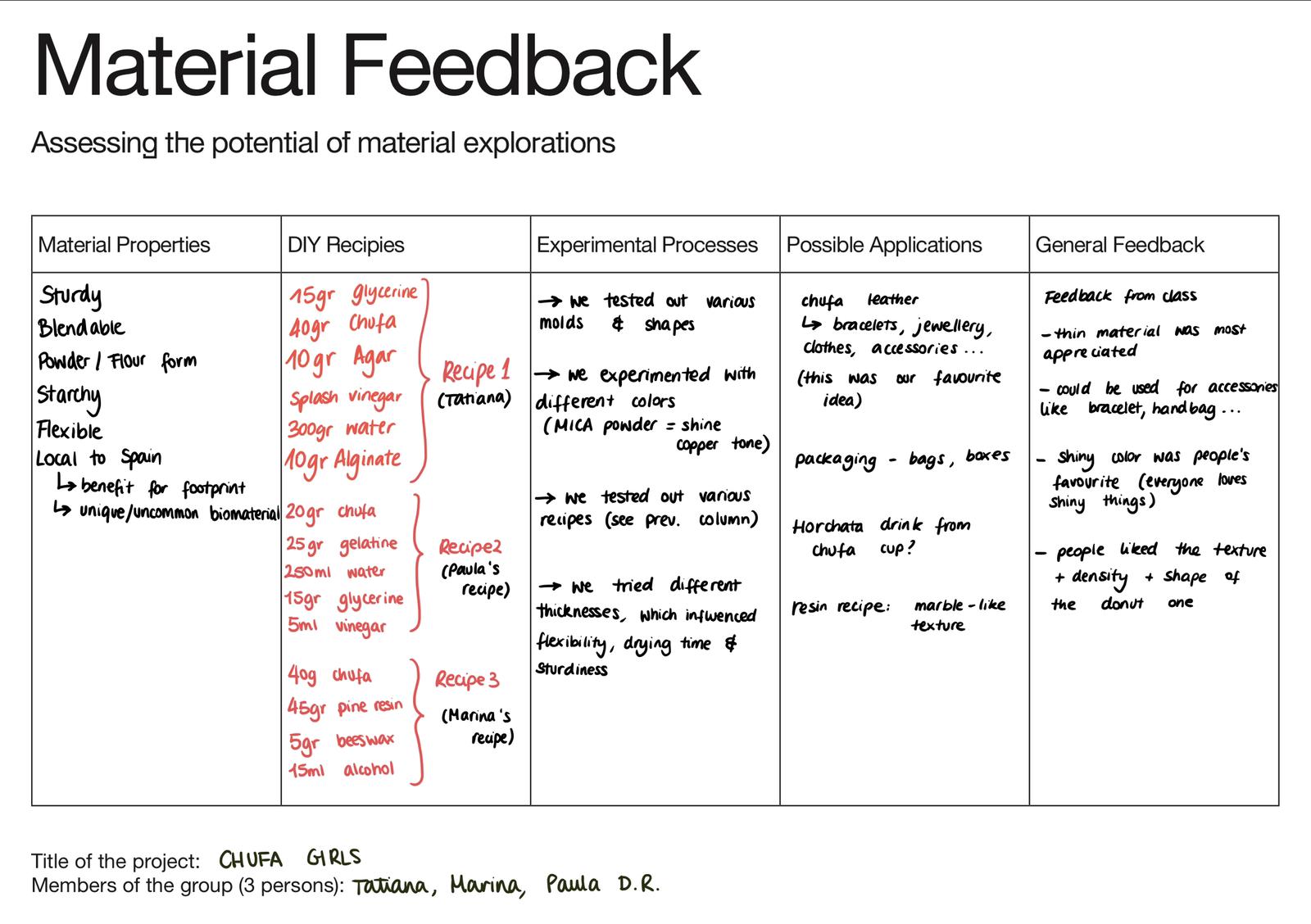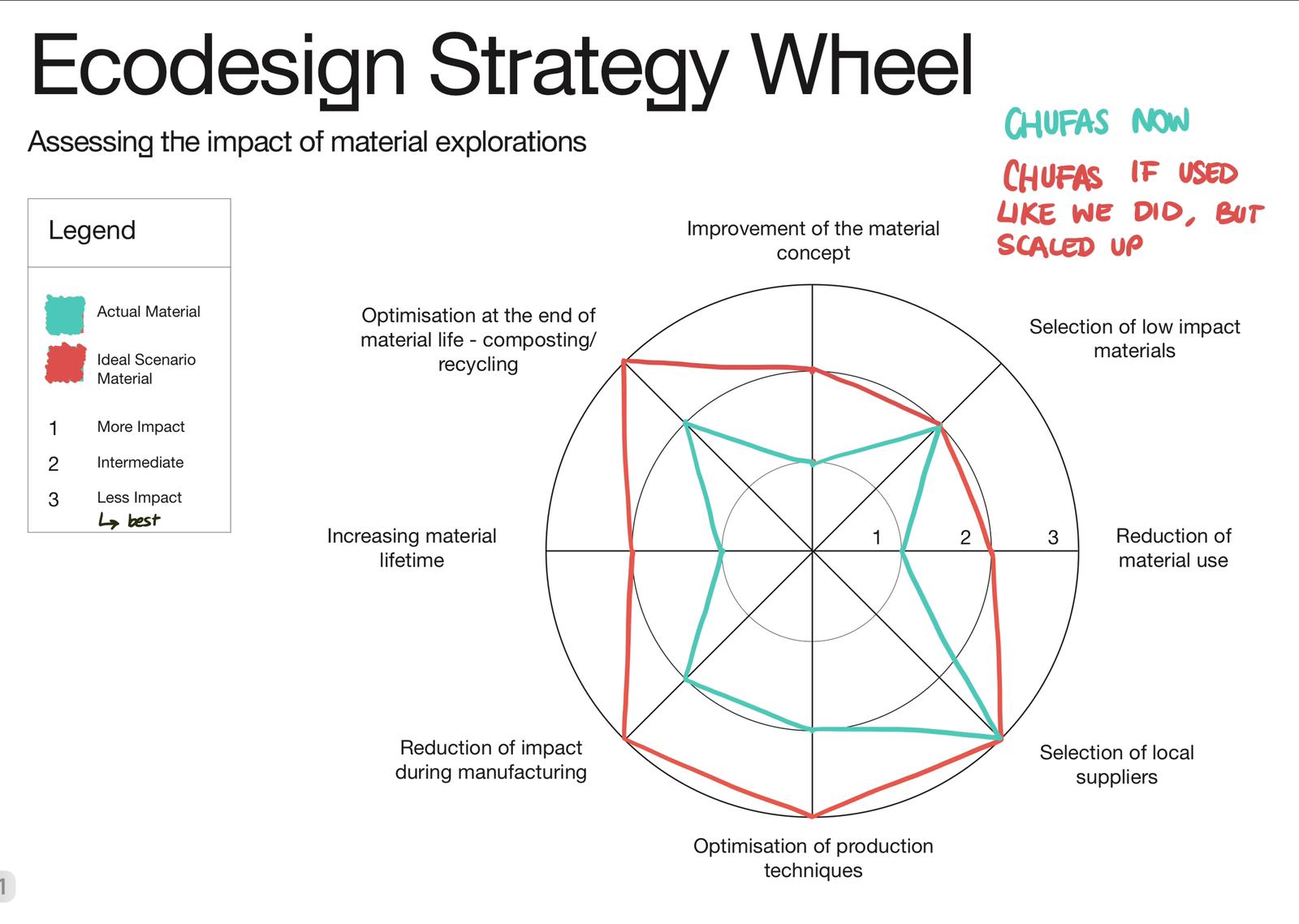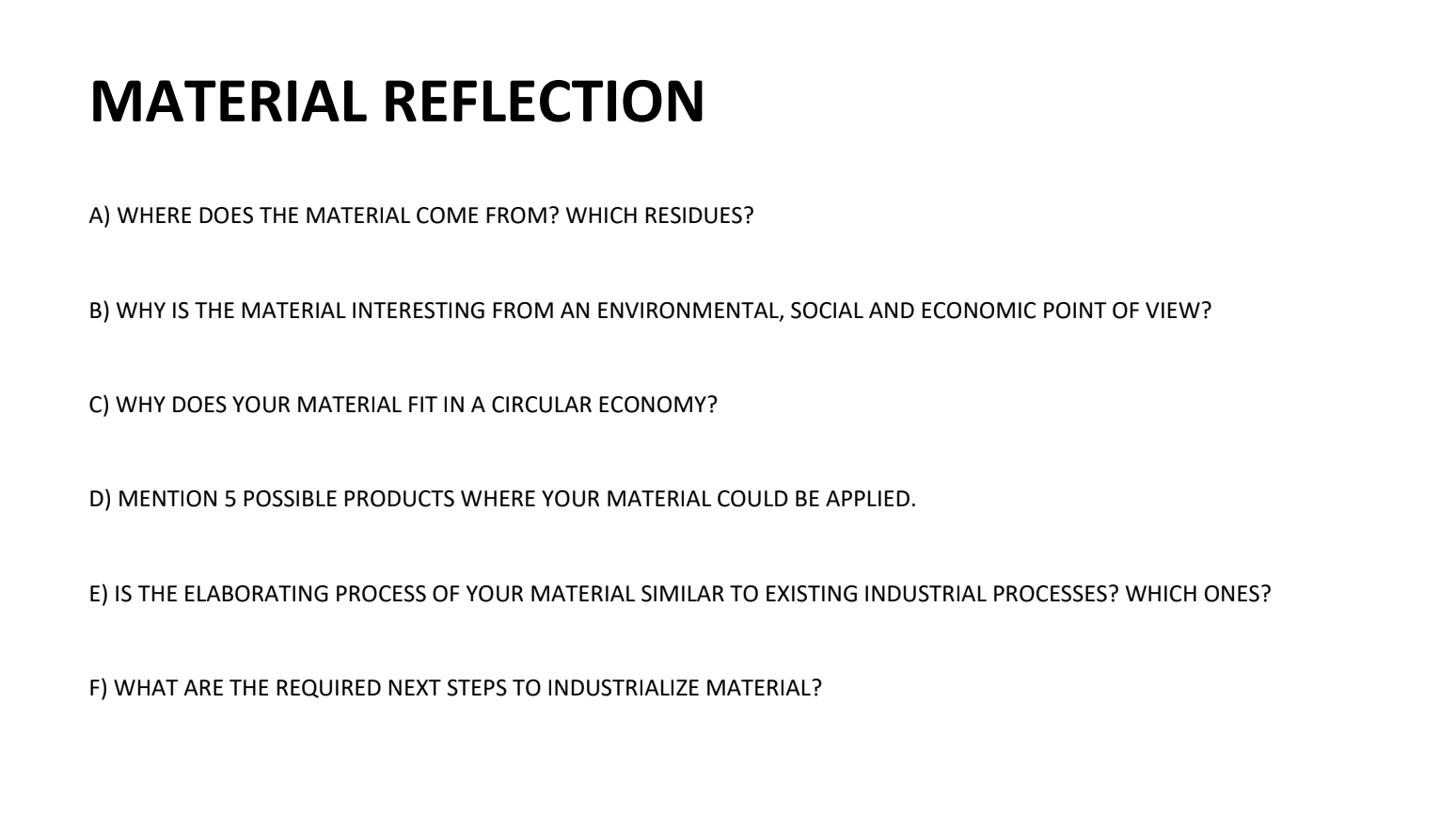Exploring Poblenou's material possibilities
On our first contact with the business from Poblenou Marina and I went to different places asking for their waste as you can see listed on the doc. The most surprising thing for us was that some of the establishments that we visited didn’t have as much waste as we expected. For instance, the local business Portal del Mar, don’t serve seafood daily due to economical problems, they only shellfish under bespoken orders. Even though they took our contact to incase they had mussels shells waste and were really kind and friendly.


Other locals seemed very eager to help but our main interest resides in the chufa waste and olive oil waste since they told us they produce tons of it weekly and we didn’t seem to find any biomaterials made out of these two waste. We see an interesting resource in chufa leftovers. We manage to collect a lot of chufa waste on a huge bag from Raul, one of the workers at Horchateria el Tio Che. He explained to, us that chufa grows under the ground, it passes through a cleaning process of 4 washes with bleach and water before being pressed to obtain the famous horchata drink.
After the weekend passed we came back on Monday 7th to work on our experimentation on biomaterial. The chufa waste happened to started a decomposition process because by the time we opened the bag it was super warm and some moh have started to grow. We thought the material would dry out during the weekend and that we would have a better resource to work with, but apparently, we needed to place it in a bigger container to let it air.








A -The material, waste chufa (tiger nut), was sourced from a nearby horchateria called El Tio Che on the rambla in Poblenou. The chufa bulbs are squeezed and used to make the drink, and then the remains excreted by the machine are the waste product, which we decided to find a second use for.
B - The chufa is the tuber of a plant. Because of this, it would theoretically be biodegradable depending on what other materials were added to it. The material is sourced locally in our nearby neighborhood. The chufa that the horchateria obtained was from Alboraia in Valencia so it is all local to spain. The material is a smart choice economically because as it is a waste product, it could be used with little to no cost since most horchateria are throwing it away anyways.
C - The material fits into a circular economy because first and foremost, it is sourced locally. It is a waste product so no new material is being added when it is being used as the main input into the biomaterials. By using the waste product, it is not allowing the chufa to become waste after being pressed but instead continuing its lifecycle into new products. If it were combined with other natural materials, it could be biodegradable, and therefore would not contribute to more waste.
D - After doing some experimentation, we saw that the chufa could take a variety of forms and therefore uses. We felt that it could make a really good plant-based leather. It could also be used for tiles, decorative objects, textile, or even a replacement for a wood composite.
E- We have not found any current industrial processes for chufa, neither for creating nor disposing of the Horchata waste. This means that our processes during the experimentation with the material are very different than the current standards. However, we did follow some basic biomaterial recipes and principles, so our experiments resemble lots of biomaterials typically using starches or other waste.
F- In order to industrialize the material, the collection process would first have to be streamlined. This means that horchaterias would have to collectively have their material placed or picked up at a collection center. This would be easiest in places where there are a lot of horchaterias, but with a single one in Poblenou it would not make sense to try to industrialize it from that location. The material would also have to work in a system where it could be dried quickly and in large quantities, removing any excess water from it as fast as possible so that it does not start to ferment or develop mold. The chufa came to us pre-ground, but ideally would have to be ground to a fine powder in order to create more even, uniform materials.